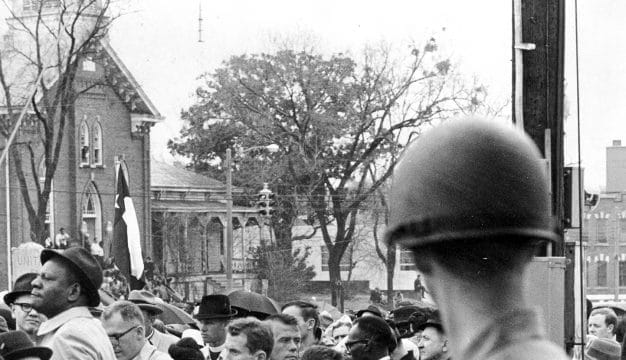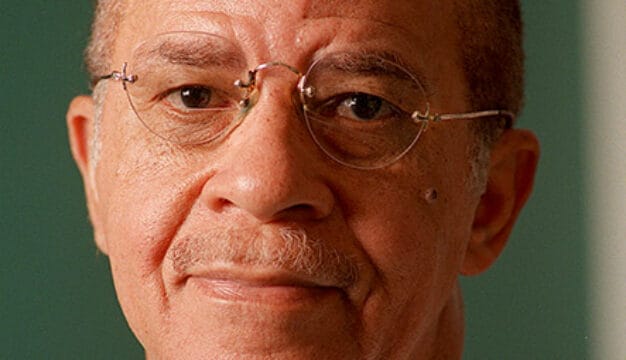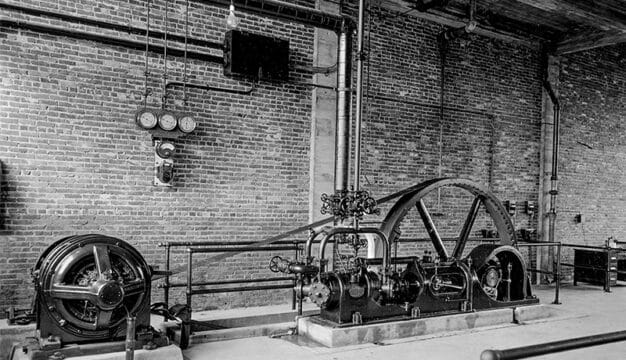Lutheran Church-Missouri Synod in Alabama
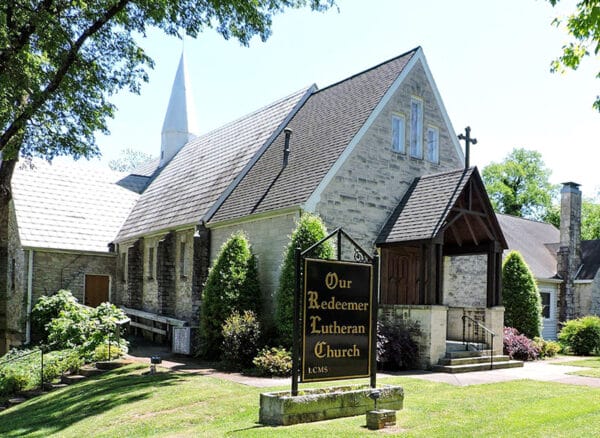 Redeemer Lutheran Church in Huntsville
The Lutheran Church-Missouri Synod is the largest Lutheran denomination in Alabama, numbering some 70 congregations with almost 20,000 members. The Synod (known by the acronym LCMS) operates approximately 20 Christian schools scattered throughout the state. There are also campus ministries at the University of Alabama and Auburn University. Concordia College in Selma was a part of the educational system of the Missouri Synod until its closure in 2018. LCMS churches in Alabama reside in the Southern District, a regional area made up of 165 churches located in Louisiana, Mississippi, and the Florida Panhandle.
Redeemer Lutheran Church in Huntsville
The Lutheran Church-Missouri Synod is the largest Lutheran denomination in Alabama, numbering some 70 congregations with almost 20,000 members. The Synod (known by the acronym LCMS) operates approximately 20 Christian schools scattered throughout the state. There are also campus ministries at the University of Alabama and Auburn University. Concordia College in Selma was a part of the educational system of the Missouri Synod until its closure in 2018. LCMS churches in Alabama reside in the Southern District, a regional area made up of 165 churches located in Louisiana, Mississippi, and the Florida Panhandle.
The Lutheran Church-Missouri Synod was formed by German immigrants from Saxony (in present-day Germany) in the 1830s to escape religious persecution by the authorities. Upon arriving in the United States, they travelled up the Mississippi River and settled for the most part in rural Missouri (Perry County), hence the “Missouri” in the name. Not all these individuals, however, decided to settle in the rural Midwest. Some elected to stay in the southern port cities where they first docked, including New Orleans, Louisiana, and Mobile, Alabama.
 Grace Lutheran Church in Mobile
The first Lutheran congregation in Alabama was established in Mobile. Theodore Heischman, a Lutheran minister unaffiliated with any Lutheran church, advertised in a local newspaper a German Lutheran Church to be established in October 1867. Little is known about him from the congregation’s history, but interest from the ad resulted in the creation of Grace Lutheran Church. After the construction of a church building in August 1868, Heischman went to California to raise funds to help pay for the new building. The venture was unsuccessful, and he was soon replaced with another minister. The congregation heard of the work of the Missouri Synod in the New Orleans area. When it came time to consider another pastor, congregants contacted Synod member Rev. H. G. Sauer in 1870 and eventually voted to join the Missouri Synod in 1897.
Grace Lutheran Church in Mobile
The first Lutheran congregation in Alabama was established in Mobile. Theodore Heischman, a Lutheran minister unaffiliated with any Lutheran church, advertised in a local newspaper a German Lutheran Church to be established in October 1867. Little is known about him from the congregation’s history, but interest from the ad resulted in the creation of Grace Lutheran Church. After the construction of a church building in August 1868, Heischman went to California to raise funds to help pay for the new building. The venture was unsuccessful, and he was soon replaced with another minister. The congregation heard of the work of the Missouri Synod in the New Orleans area. When it came time to consider another pastor, congregants contacted Synod member Rev. H. G. Sauer in 1870 and eventually voted to join the Missouri Synod in 1897.
Other churches founded in the greater Mobile area were formed by missionaries of the Lutheran Church–Missouri Synod and its regional entity, known as the Southern District and organized in 1882. Congregations established within the district over the next decades include St. Mark in Alberta (1908), St. Paul in Foley (1912), and Redeemer in Fairhope (1949). In metropolitan Mobile, the Holy Cross and Our Savior congregations were founded in 1959 and 1964, respectively.
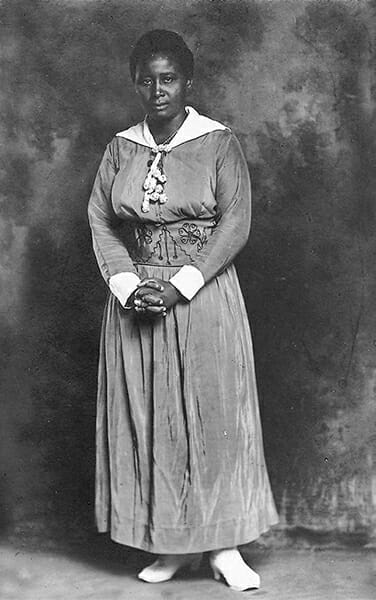 Rosa J. Young
The Synodical Conference of the Missouri Synod was a segregated mission effort that reached out to African Americans and other non-whites through its Synodical Conference Mission Board. The board developed missions in Louisiana, Virginia, and North Carolina in the 1880s and 1890s, but its most important mission field work took place in Alabama’s Black Belt region in 1916 under the leadership of Rev. Nils Bakke and Wilcox County native Rosa Young, an African American school teacher and daughter of an African Methodist Episcopal minister. She had appealed to the Lutheran Church in St. Louis, Missouri, for funds to help sustain her school, Rosebud Literary and Industrial School. Bakke continued to develop African American congregations. The first congregation, Christ Lutheran, became known as the “Mother Church of Black Lutheranism” in Alabama. As a result of this mission work, as many as 24 African American Lutheran churches were formed, including congregations in Mobile (1920), Atmore (1925), Montrose (1930), Point Clear (1951), and Pritchard (1954).
Rosa J. Young
The Synodical Conference of the Missouri Synod was a segregated mission effort that reached out to African Americans and other non-whites through its Synodical Conference Mission Board. The board developed missions in Louisiana, Virginia, and North Carolina in the 1880s and 1890s, but its most important mission field work took place in Alabama’s Black Belt region in 1916 under the leadership of Rev. Nils Bakke and Wilcox County native Rosa Young, an African American school teacher and daughter of an African Methodist Episcopal minister. She had appealed to the Lutheran Church in St. Louis, Missouri, for funds to help sustain her school, Rosebud Literary and Industrial School. Bakke continued to develop African American congregations. The first congregation, Christ Lutheran, became known as the “Mother Church of Black Lutheranism” in Alabama. As a result of this mission work, as many as 24 African American Lutheran churches were formed, including congregations in Mobile (1920), Atmore (1925), Montrose (1930), Point Clear (1951), and Pritchard (1954).
In north-central Alabama, Lutherans were drawn to the area by John G. Cullman, a former officer in the German Army who bought much land in the region. He persuaded German families to settle that area of Alabama which later became the city of Cullman. In 1880, the Missouri Synod sent missionary Rev. Traugott Thieme into north Alabama to minister to the German immigrants. Traugott was replaced in 1884 by Rev. Carl Burkhart, who was commissioned to work with German families in the Garden City–Hanceville area of Cullman County. Rev. Ferdinand Englebert was sent to Cullman and organized the church of St. Paul in 1886. Another congregation was organized in Decatur 35 miles north of Cullman in 1898. New work on a church was begun in nearby Hartselle in 2000.
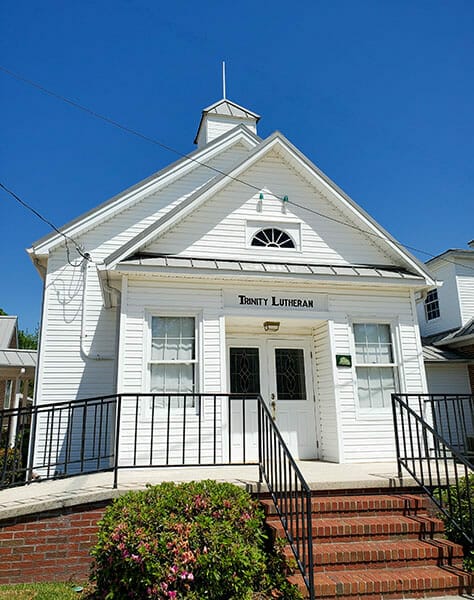 Trinity Lutheran Church Parish Hall
The Lutheran Church in Birmingham was an outgrowth of the Garden City mission near Hanceville. The first congregation was Zion (now First) in 1886, followed by Trinity in 1949. Others were developed in Vestavia Hills (1959), Eastwood Mall (1964), Gardendale (1975), the Trussville–Argo area, and Bessemer (1954).
Trinity Lutheran Church Parish Hall
The Lutheran Church in Birmingham was an outgrowth of the Garden City mission near Hanceville. The first congregation was Zion (now First) in 1886, followed by Trinity in 1949. Others were developed in Vestavia Hills (1959), Eastwood Mall (1964), Gardendale (1975), the Trussville–Argo area, and Bessemer (1954).
Mission work in Huntsville and northwest Alabama was centered around the Redstone Arsenal and the German engineers and scientists who settled into the area in the early 1950s. There are three congregations in Huntsville and one each in Florence and Muscle Shoals. In eastern and northeastern Alabama, congregations exist in Gadsden, Attalla, Scottsboro, Albertville, and Fort Payne. Montgomery has three LCMS congregations, as does Tuscaloosa. Three additional congregations were added to the Missouri Synod in the 1950s and 1960s from the former American Lutheran Church: Trinity (now United) in Montgomery, Christ in Tuscaloosa, and St. Paul in Birmingham.
 Robert Graetz and Lutheran Activists
The Lutheran Church is distinguished from other Christian denominations by its specific form of liturgical worship and its emphasis on a teaching ministry. Its membership in the United States as a whole is generally politically conservative and predominantly white, although Alabama has 19 African American congregations. Some congregations participated in the civil rights movement of the 1950s and 1960s, including United in Montgomery, St. Paul in Birmingham, and Christ in Tuscaloosa. The reverends Joseph Ellwanger, Willie Herzfeld, and James Fackler all played critical roles in the struggle. Lutheran minister Robert Graetz was the only white clergy member to participate in the Montgomery bus boycott.
Robert Graetz and Lutheran Activists
The Lutheran Church is distinguished from other Christian denominations by its specific form of liturgical worship and its emphasis on a teaching ministry. Its membership in the United States as a whole is generally politically conservative and predominantly white, although Alabama has 19 African American congregations. Some congregations participated in the civil rights movement of the 1950s and 1960s, including United in Montgomery, St. Paul in Birmingham, and Christ in Tuscaloosa. The reverends Joseph Ellwanger, Willie Herzfeld, and James Fackler all played critical roles in the struggle. Lutheran minister Robert Graetz was the only white clergy member to participate in the Montgomery bus boycott.
The LCMS, together with the Evangelical Lutheran Church in America, operate a statewide social ministry agency known as Lutheran Ministries of Alabama (LMA), which provides a summer tutoring program for students in need and a visitation site in Cullman for children of divorced parents. The agency also is involved with Lutheran Disaster Response, which helps people throughout the United States who have been the victims of tornadoes, floods, and other natural disasters. LMA is a member of Alabama Arise, which advocates for the poor in Alabama, and Greater Birmingham Ministries, which provides food, clothing, and financial assistance to those in need.
Additional Resources
Dickinson, Richard C. Roses and Thorns: The Centennial Edition of Black Lutheran Mission and Ministry in the Lutheran Church-Missouri Synod. St. Louis: Concordia Publishing House, 1977.
Ertl, James, ed. God’s Amazing Grace: A Centennial History of the Southern District of the Lutheran Church Missouri Synod. Southern District Centennial Committee, 1982.
The Lutheran Witness (Southern Edition inserts). St. Louis, Mo: Concordia Publishing House, April 1953 through June 1964.
